Risotto with Borage, Wild Asparagus and Robiola
Gluten + Lactose Free. Moving Through the Seasons with Italy's il Barbanera Calendar and Almanac.
‘Advice from times gone by that makes us feel in harmony with nature and rediscover the knowledge of our grandparents.’ - Umberto Eco
This past Christmas, Riccardo bought me a gift which suggested that I might go around with the Internet connected to my wrist. It wasn’t my best moment, as I proclaimed that he clearly didn’t know me (poor man). After this, he was determined to prove me wrong, and in the following weeks, he returned from Ireland with ‘The Irish Bakery’ by Cherie Denham (easily one of the most stunning cookbooks I have laid eyes on). Then, one morning, he came home with Italy’s ‘il Barbanera’ calendar for me to hang on our kitchen wall.
Yes, he knows me.
When we first moved to Rieti’s Holy Valley after living together in Rome, I remember him coming out of the ferramenta and placing an agricultural calendar in my lap. I recall studying the detail, which included little circles to signify the ever-changing moon. Here I understood that the rhythm of the moon dictates more than the turning of the tide, and I was in awe of this newfound information.
This may have been an earlier version of the historic il Barbanera calendar, or it might have been a calendar produced by the hardware store itself. This was about fifteen years ago now, and as a self-proclaimed city girl, I could not fully appreciate the information that I was holding in my hands.
Today, this calendar is one of my most prized possessions, and it is published alongside the il Barbanera almanac, which promises ‘A Year of Happiness’.
Il Barbanera was first produced by the famous astronomer and philosopher Barbanera, and it has been offering predictions, advice and curiosities since 1762. ‘For more than two and a half centuries, il Barbanera has entered the homes of Italians’ to answer the questions:
Who are we? Where are we going?
What do we plant? What do we eat?
With which moon? And the horoscope?’
A detailed article from the RAI offers the in-depth history that lies behind its modern and visually pleasing branding.
It was the year 1761 in Foligno, a thriving community in central Italy that had already made itself known for another printing that had gone down in history, the first of the Divine Comedy, by the printer from Mainz, a student of Gutenberg, Johann Numeister, in 1463. The chronicles tell that a street vendor showed up at the market with a load that he considered particularly valuable. It was September 15. Among the stalls of the fair, the man waited for the best moment to offer his goods to buyers and curious onlookers present: “Blackbeard! Blackbeard of Foligno! Saints, fairs, time and moons. And for everyone, the General Discourse of the famous Blackbeard, for the year 1762"… That almanac, published by Pompeo Campana's printing house and decorated with pleasant woodcuts, thus entered history and became the Italian Almanac par excellence.
Fairs, markets and storytellers at the beginning of the adventure, Barbanera was already well-known in the city and many turned to him for teachings and advice. But only in that year did the legendary character decide to entrust the fruit of years of observations and studies to the printed page, to the single sheet of a wall calendar. From then on, the calendar began to reach an increasingly numerous and loyal readership every year. And such was its fame that it soon went beyond the city limits. Sold at fairs and markets by storytellers and street vendors, Barbanera was purchased starting in September. Thus, it entered homes where, hung in the kitchen or in the stable, it proved to be an indispensable tool for daily activities, full as it was of advice for agricultural work, weather forecasts, saints and holidays of the year.
Gabriele D'Annunzio: "The book of my bedside is Barbanera". Thus Barbanera, a solitary figure of astronomer, became an institution in agricultural Italy between the 18th and 19th centuries, a sort of "gospel" especially among the rural classes.
After receiving the calendar, I combed every edicola in Rieti with the hope of finding the almanac but it was nowhere to be found. Resting on the checkout of the website, I was even more convinced about this acquisition as I read these words moving across the bottom of the page, ‘He who buys an almanac lives well and without ailments.’
Umbria Tourism provides an even more interesting summary, which helps us to understand il Barbanera as the ‘treasure trove of folk wisdom’ that forms part of Italy’s intangible cultural heritage:
Not just a calendar, but a piece of Italian history. It is the voice of a past that speaks to the present, a mix of science, tradition and folklore that continues to enchant those who leaf through it.
The Barbanera is not just an almanac: it is a cultural legacy that lives on, page after page, year after year since 1762, inscribed in the UNESCO Memory of the World Register in 2015.
If there is a name that evokes tradition, rural wisdom and a hint of magic, it is Barbanera. The famous and long-standing almanac, born in the mid 18th century in Foligno, is much more than just a calendar: it is a true symbol of Italian popular culture.
Its pages offer not only weather forecasts, but also practical tips for farming, cooking, health and even love.
Over its two centuries of history, the almanac has become a trusted companion for generations of Italians. It has been a point of reference for many farmers, who followed its advice to plan their work in the fields. It was published even during the two World Wars, becoming a symbol of resistance and hope.
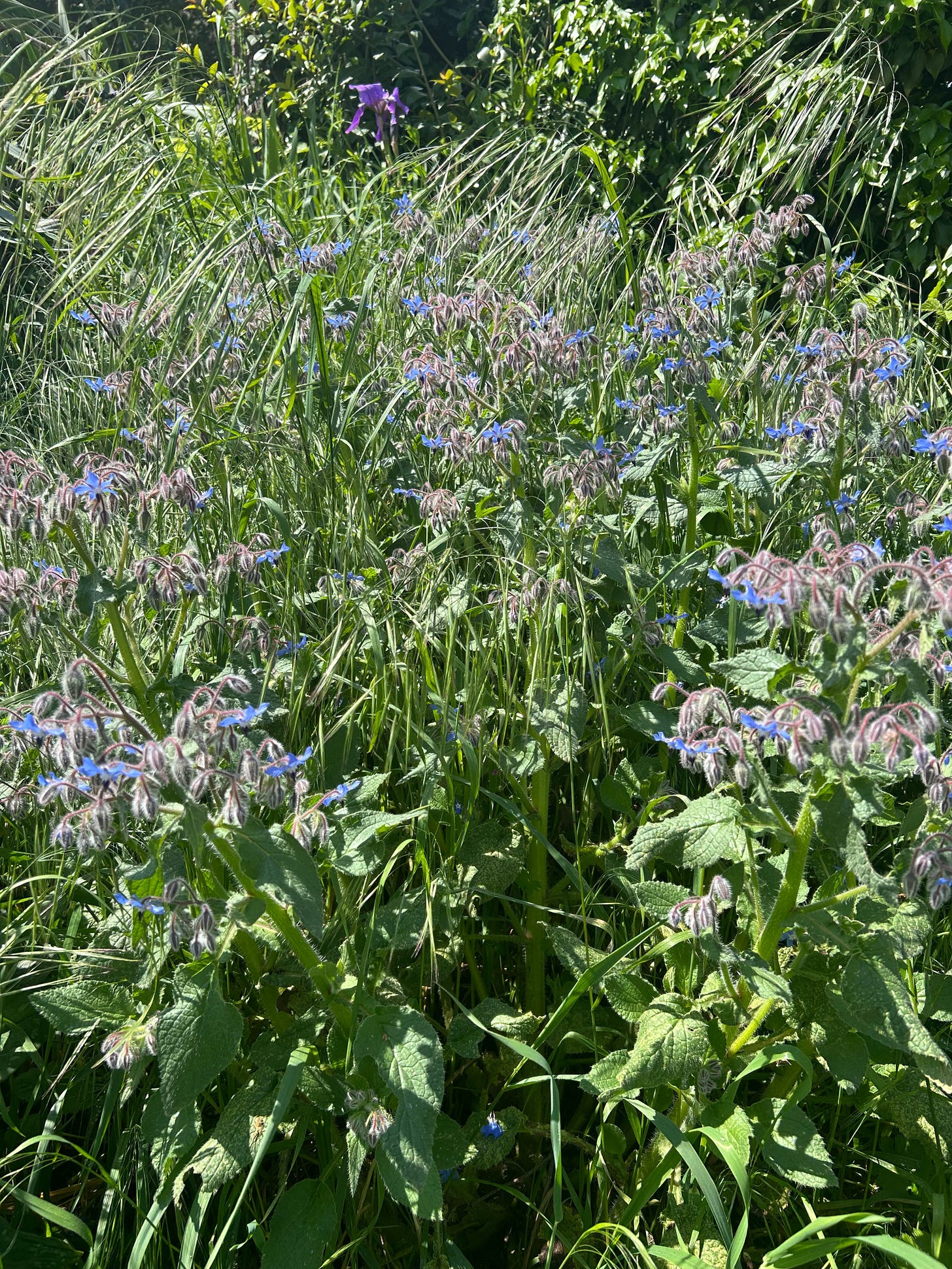
They say that April showers bring May flowers, and this has certainly been the case here in Central Italy. April is always a glorious unfolding with the first white and pink blossoms as symbols of hope against the dark landscape. They give way to the romance of pink peony, violet trails of wisteria, the ever-so-classy camellia, the magnificent magnolia and sweet yet seductive lilac. Crossing over into May, we see the passionate papery poppy pushing through fields covered in the wild yellow specks of a painter's brush and the appearance of the demure dog rose. The season courts us at this height of its beauty, and it is hard not to be seduced.
Among this cornucopia, we also find our wild edible foods and flowers.
During our many engagements of the past weeks, we travelled through Umbria, Lazio and Abruzzo. The most pleasant part of these drives was gazing out of the passenger window to admire the blooming diversity of the plant life which frames the highways and country roads. The breathtaking beauty of the white and oh so romantic frilly lace festoon, which hung from the trees as we drove south along the via Salaria into the beating heart of Rome, is so very hard to put into words. I wondered if ancient Romans found themselves in awe of the same creamy disks of elderflower as their horse and carts floated back towards the capital across shiny interlocked stones.
Among these pleasant sightings were the blazing sky blue streaks of starry borage resting on their banks. So celestial that it would be fair to assume that they might have even fallen from the sky.
Il Barbanera reminds us to take advantage of its presence as both a medicinal and edible plant. Growing up as a city kid in the States, I often wondered how people cured themselves before modern medicine, and now I know.
Borage, as part of nature’s pharmacy, has anti-inflammatory effects and provides relief for ailments such as arthritis, skin conditions, and asthma. It also helps with mood regulation, digestive health, and its diuretic effects can help rid the body of excess fluid. It is no surprise that the oil produced from this plant can 'improve skin hydration and elasticity, potentially reducing the appearance of fine lines and wrinkles.’
Foraging and plant identification are innate indigenous skills inherited from our ancestors. Some of us hold this knowledge close to the surface, using it in our everyday lives, and for others this know-how is buried deep within. In the past, plant identification would have been naturally passed to us as children as we walked through nature, following along the heels of our elders.
There is so much to recall as the seasons turn, and as a novice gardener who has many books on gardening and foraging, this can feel overwhelming. I am so very thankful to have il Barbanera calendar and almanac so that I have a digestible snapshot of the seasons in one place.
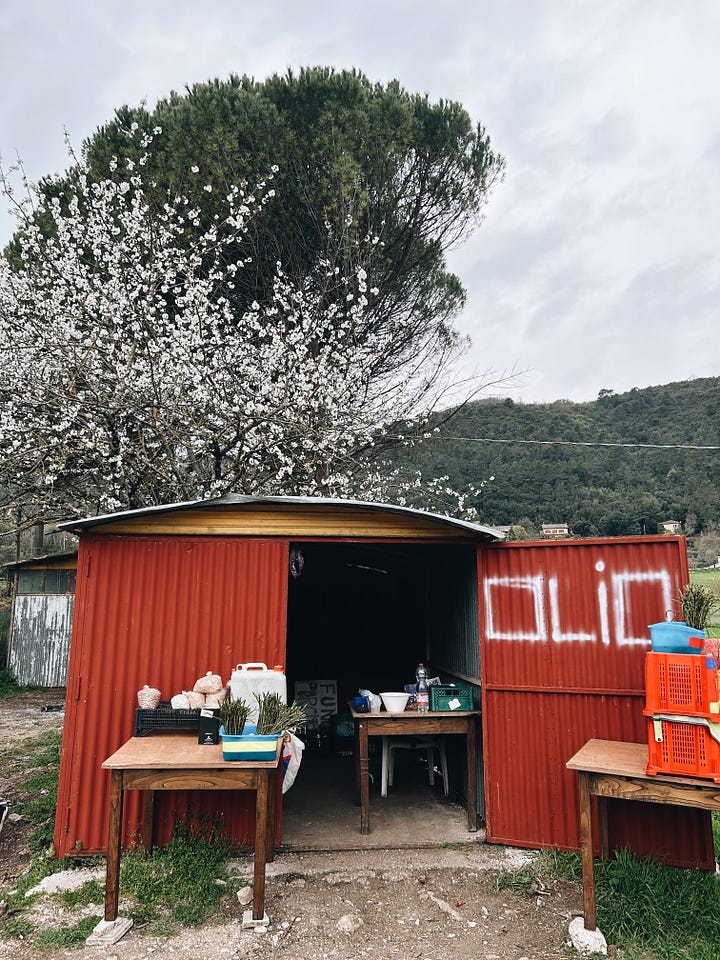
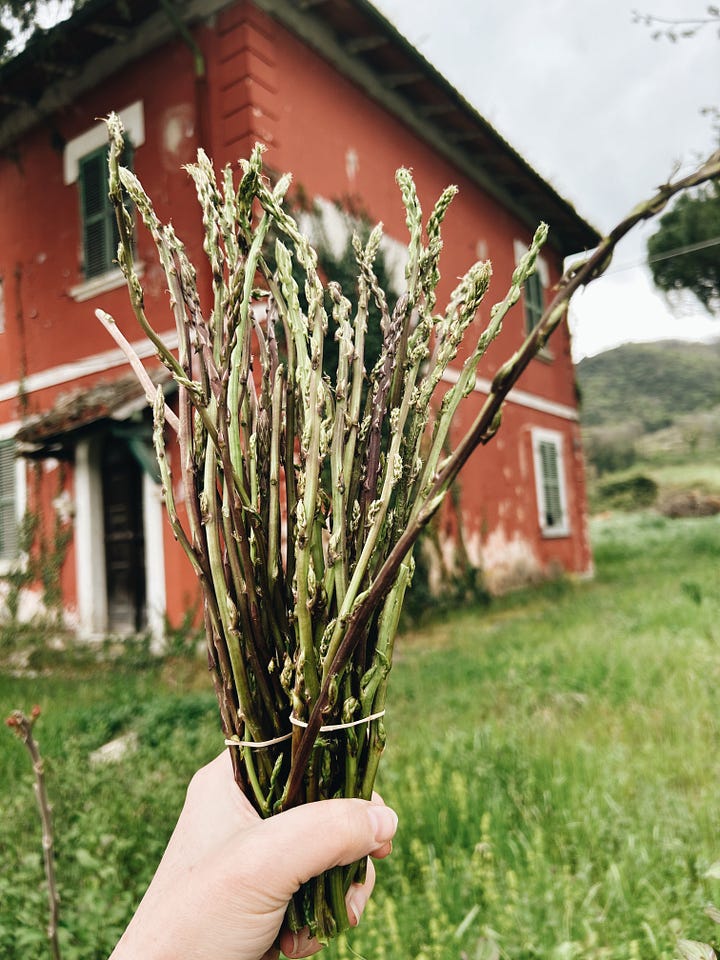
The April recipe recommendation from il Barbanera is risotto with wild asparagus, and since I had some in the freezer from a trip to Foligno in Umbria (where you can always find it being sold on the side of the road), I decided that borage would make a nice addition to this recipe (what grows together goes together). And so I dragged the children behind me to collect some from the roadside banks near our house with the swarms of bees reminding me to take only what I needed.
I adjusted this recipe to my liking, preparing a version of the basic asparagus risotto for the children, and then I added the borage for myself and Riccardo at the end (the beautiful flexibility of it all).
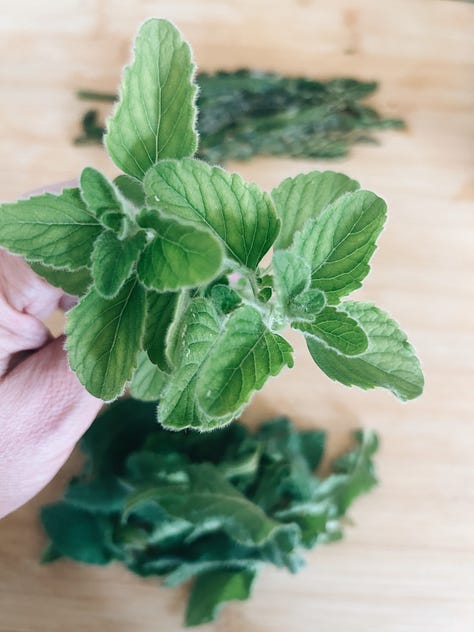
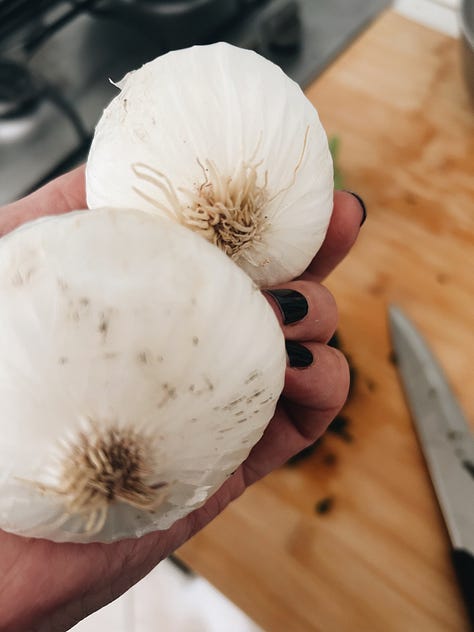

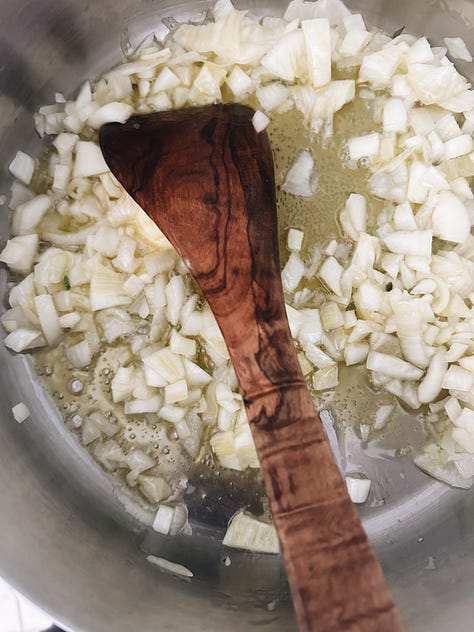
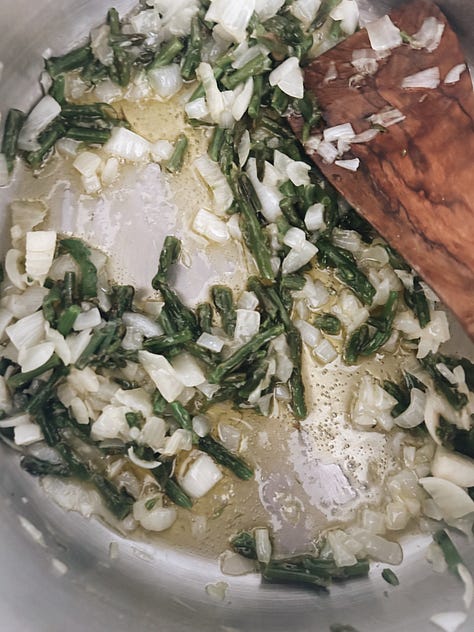
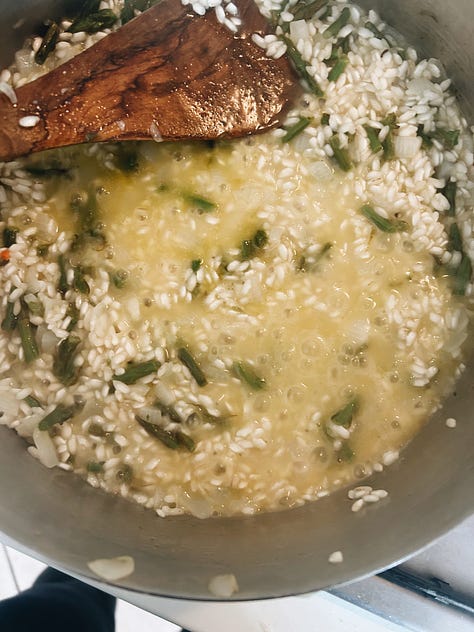
Riccardo started to weep when he took his first bites, and this was a surprise. He said things like ‘assurdo’, ‘Michelin star’, and ‘you cook like you were born here’. I wouldn’t go that far, but I will say that I made this recipe with love, and maybe these flowers possess some unknown energy that allowed me to cast an unintentional spell.
I suppose this is the beauty of it all, and what it means to live well according to nature.
What elevates this recipe is the use of Robiola. Most people know it as the soft, fresh, square-packaged cheese found at the supermarket. Its texture and flavour are somewhere between cream and goat’s cheese. This Robiola is not to be confused with the Robiola of the Langhe region, an Italian soft-ripened cheese of the stracchino family, quite similar to a camembert.
Inspired by the April 2025 recipe from il Barbanera
Risotto with Borage, Wild Asparagus and Robiola
Risotto con boraggine, asparagi selvatici e robiola
Serves 4
GF + LF + V
Ingredients:
320g risotto rice - Carnaroli or Vialone Nano
75g wild asparagus*
2 handfuls of fresh borage leaves + flowers for garnish*
2 small spring onions
50g Pecorino Romano and/or Parmigiano Reggiano, finely grated
50g Robiola, regular or lactose-free
2 quality vegetable stock cubes, powder or 1.5L fresh vegetable stock
2 knobs of salted butter, regular or lactose-free*
1/2 glass of white wine
2 sprigs of mentuccia romana
Extra virgin olive oil
Sea salt and freshly ground black pepper
Method:
In a medium saucepan bring 1.5L of water to a gentle boil and add the stock cubes/powder or do the same for your fresh vegetable stock and then keep hot over very low heat.
Add a drizzle of olive oil to a small frying pan and warm over low heat. Add the borage leaves to the pan stirring and add a splash of stock cooking until the leaves are wilted. Remove from the pan and finely chop or blitz them into a cream.
Finely chop your onion, and chop your asparagus into pieces about 4cm long.
Add a thin coat of olive oil to the bottom of a wide, heavy-bottomed saucepan and warm over low heat. Add a knob of butter, and when it melts add your onion and a pinch of salt and cook 3-5 minutes until translucent.
Stir in your asparagus, cooking for another 3-5 minutes.
Raise the heat, add your rice and stir to coat. Toast until it is also shiny and translucent, 2-3 minutes, taking care not to burn.
Add the white wine and stir until it evaporates. Add another pinch of salt and then lower the heat.
Give the rice a good stir. Add the stock one ladle at a time stirring every few minutes. Cook the rice al dente 20-30 minutes.
Stir in the borage and rougly chopped mentuccia leaves toward the end of the cooking time.
Turn off the heat, add the last knob of cold butter and half of the grated cheese for the mantecatura. Gently shake the pan in a wave motion to mix or stir purposely with a wooden spoon. Stir in the Robiola.
Check seasoning and add another splash of hot broth to loosen if necessary. Put the rest of the grated cheese on the table and serve immediately garnished with fresh borage flowers.
Notes:
If you are unable to get your hands on wild asparagus, you can thinly slice and chop any type that you have to hand.
Use mascarpone and/or fresh goats cheese as a substitute for Robiola (you want a little bit of tang).
I generally use lactose-free butter, but I also prefer bright yellow Irish or French salted butter (unless you can find an Italian one) for best results.
Remember to forage responsibly and to consult your healthcare provider before using alternative forms of medicine.





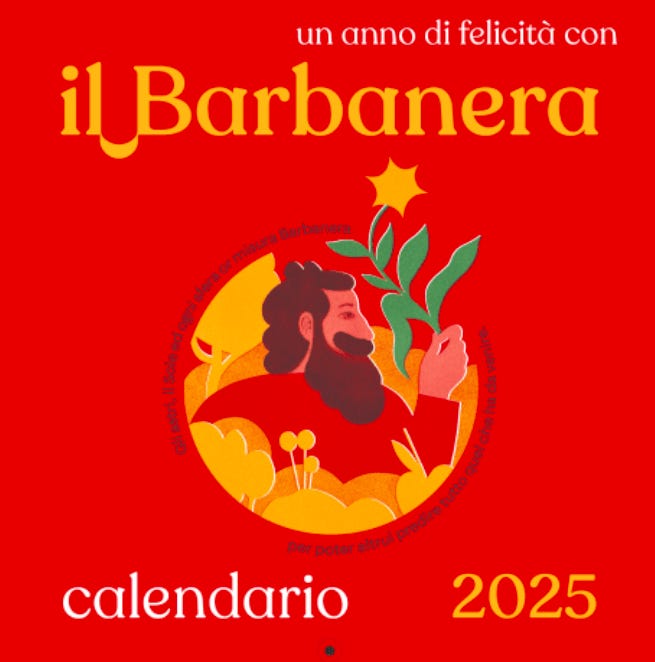
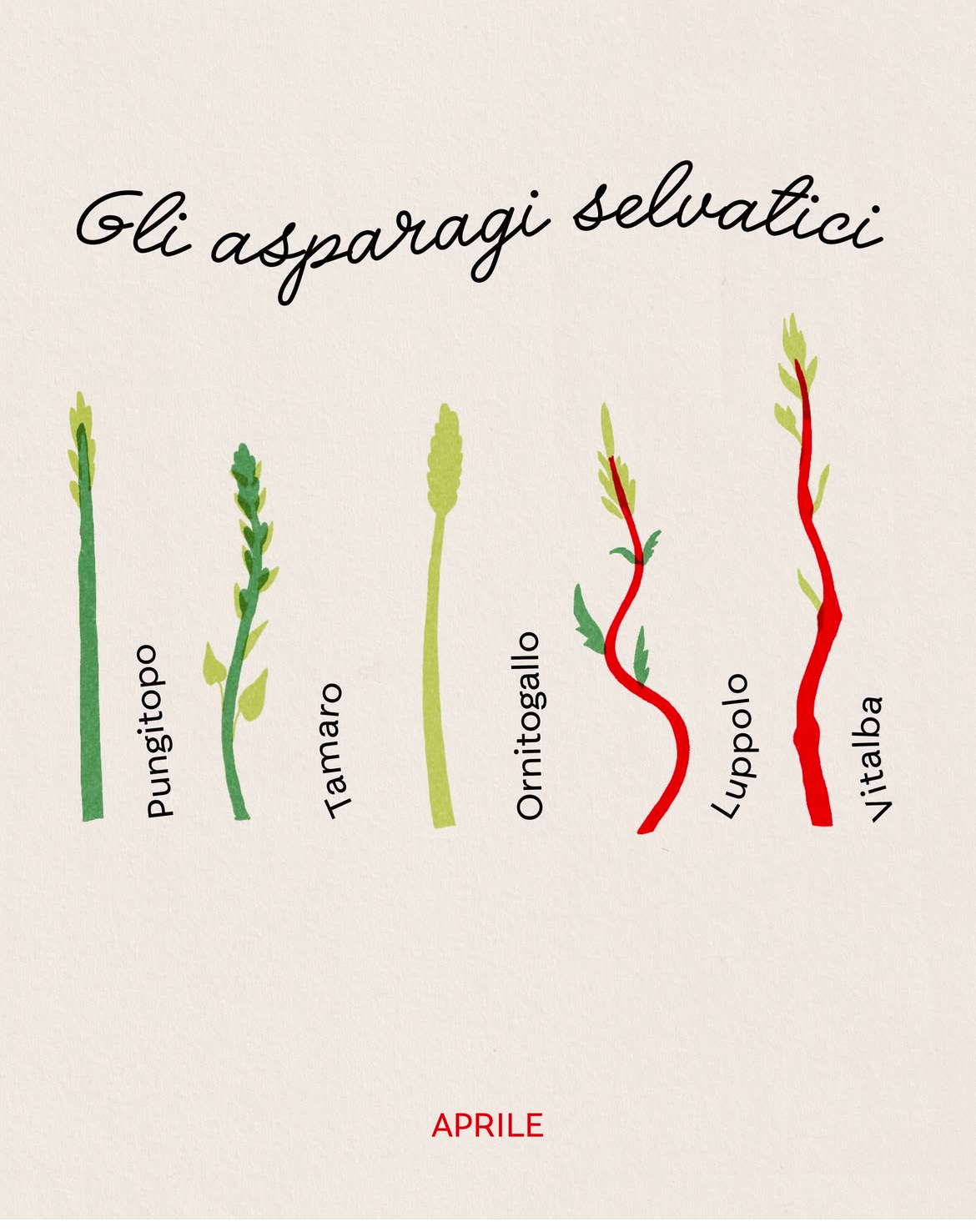


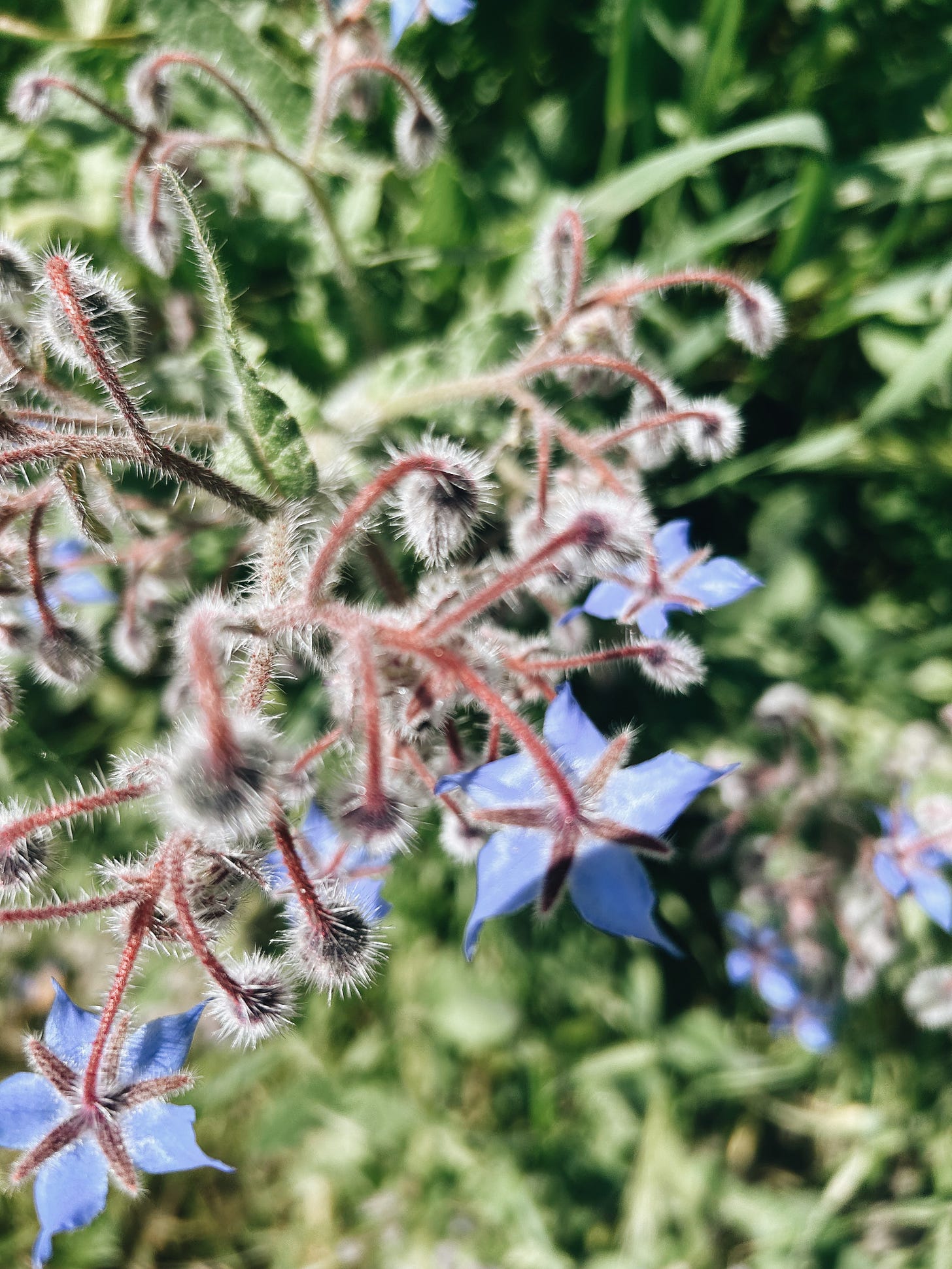
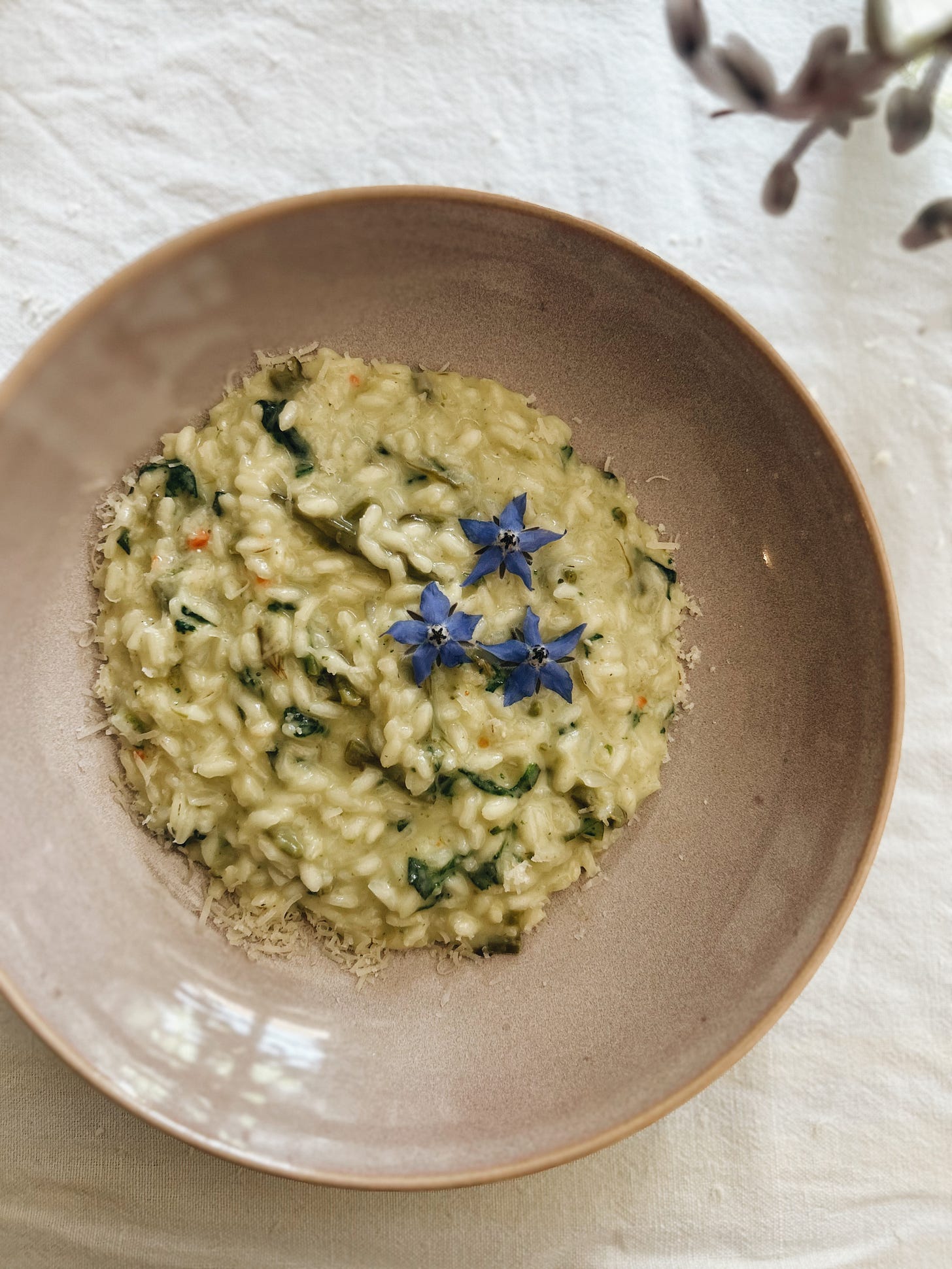

Love this !